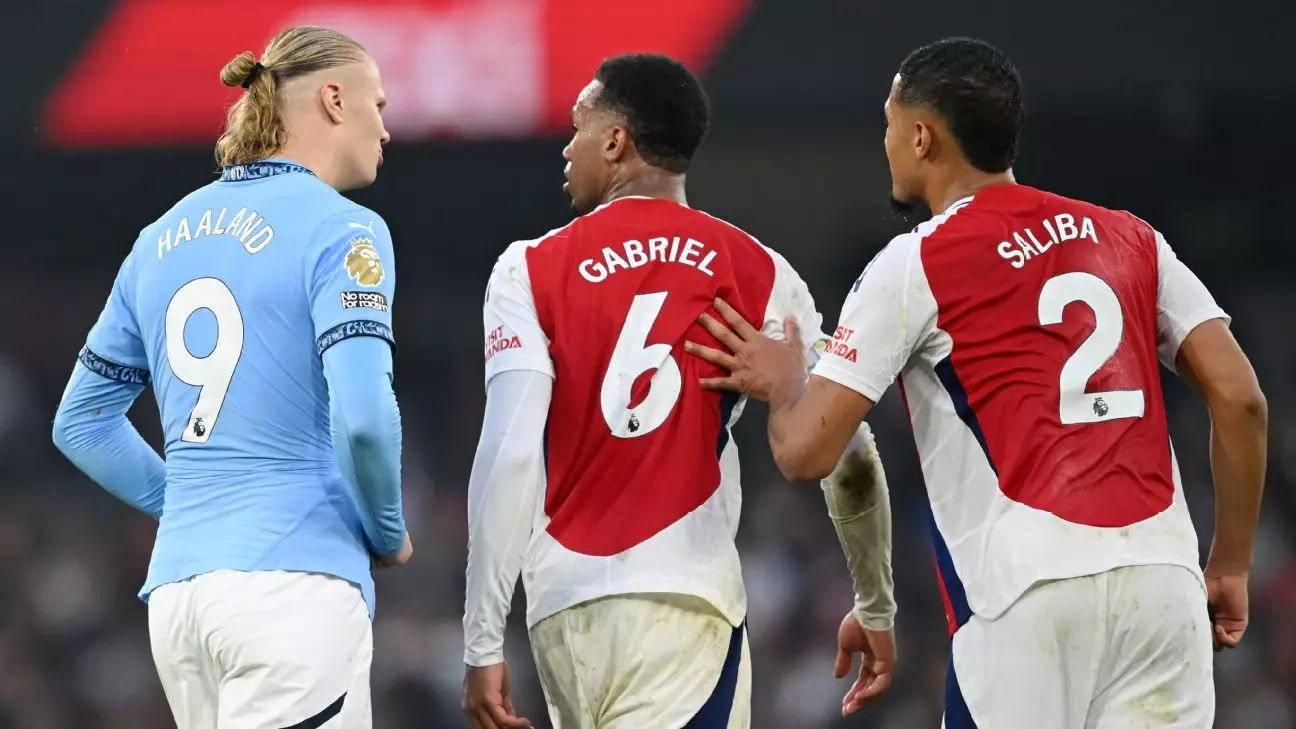In the realm of professional football, particularly within the Premier League, shirt numbers have undergone a significant transformation over the years. The once cherished tradition of players occupying specific numbers that corresponded with their roles on the pitch has seemingly vanished. No longer is it common to see a lineup where the first eleven players are dressed in sequential numbers from 1 to 11, a practice that has not been observed since 1998. This shift raises crucial questions about the implications of this evolution for the identity and culture of the game and invites us to examine which teams could still field a competitive starting XI composed of these “traditional” numbers.
Historically, players wore numbers that directly corresponded with their positions: goalkeepers donned the No. 1, defenders were typically found wearing Nos. 2 to 5, midfielders occupied 6 to 8, and forwards finished off the lineup with Nos. 9 and 10. This uniformity not only made it easier for fans to follow the game but also cultivated a sense of belonging and role identity for players. However, the modern era, characterized by commercial influence and individual branding, has led to a significant departure from these conventions. Now, it is common to see players at every position sporting numbers far removed from traditional allocations, challenging the historical significance of shirt numbers.
The most pressing observation is how this shift impacts the dynamics of prominent teams, often referred to as the ‘Big Six’ in the Premier League: Arsenal, Chelsea, Liverpool, Manchester City, Manchester United, and Tottenham Hotspur. If tasked with assembling a squad comprising only players from these traditional 1-11 slots, many teams would find themselves in a precarious position.
For instance, Arsenal faces a significant setback, as they cannot even list a goalkeeper among their eligible players. The absence of a No. 1 not only leaves them vulnerable but also exposes weaknesses in their overall depth. With defenders and midfielders dominating their lineup and only limited attacking options, the team’s reliance on numerical representation highlights a broader shift in how team composition is understood. The absence of a traditional No. 10, in particular, signifies a loss of creativity and flair that once characterized the team’s style of play.
On the other hand, contrasting fortunes are evident in Liverpool’s squad. Despite also lacking a No. 6, they can field a robust lineup with a notable balance between defensive and attacking prowess. Players such as Alisson in goal and a formidable front three, including Salah and Nunez, indicate that even with the limitations imposed by traditional shirt numbering, Liverpool can still present a challenging adversary.
Furthermore, the situation begs the question of which players are left out due to numerical constraints. Teams like Chelsea and Manchester City are ironically deprived of high-profile stars, thus forcing them to rely on lesser-known players to fill critical roles. Chelsea, for instance, must navigate the absence of key player Cole Palmer simply because he occupies the number 20. Meanwhile, City struggles with absent numbers for critical positions, ultimately highlighting the reliance on an ever-narrowing pool of talent.
For supporters who reminisce about the past, witnessing modern teams evoke a sense of nostalgia. The lack of traditional squad configurations may indeed be viewed as symptomatic of a broader crisis in football—a troubling indicator of misplaced priorities where marketability and branding overshadow the ethos of the beautiful game. Critics argue this shift correlates with alienation from the sport’s roots, where connection and identity once thrived.
Despite some calling such concerns hyperbolic, the continued evolution toward an increasingly commercialized football landscape raises red flags regarding player identity and team spirit. Naming rights, sponsorship deals, and the resulting balance sheets seem to dictate not only how teams operate but also how their players are perceived within the cultural zeitgeist of modern football.
As we probe deeper into how shirt numbers and player roles have evolved, it becomes clear that a synthesis of tradition and modernity is required. While the historical significance of shirt numbers may be waning, it reminds all stakeholders—players, clubs, and fans alike—of football’s rich heritage. The challenge now lies in reclaiming elements of this history to ensure that the spirit and identity of the game persist, even amid an ever-changing backdrop. It is vital for the future of football to strike a balance between innovation and tradition, preserving the essence of the sport that has captivated generations.

Leave a Reply